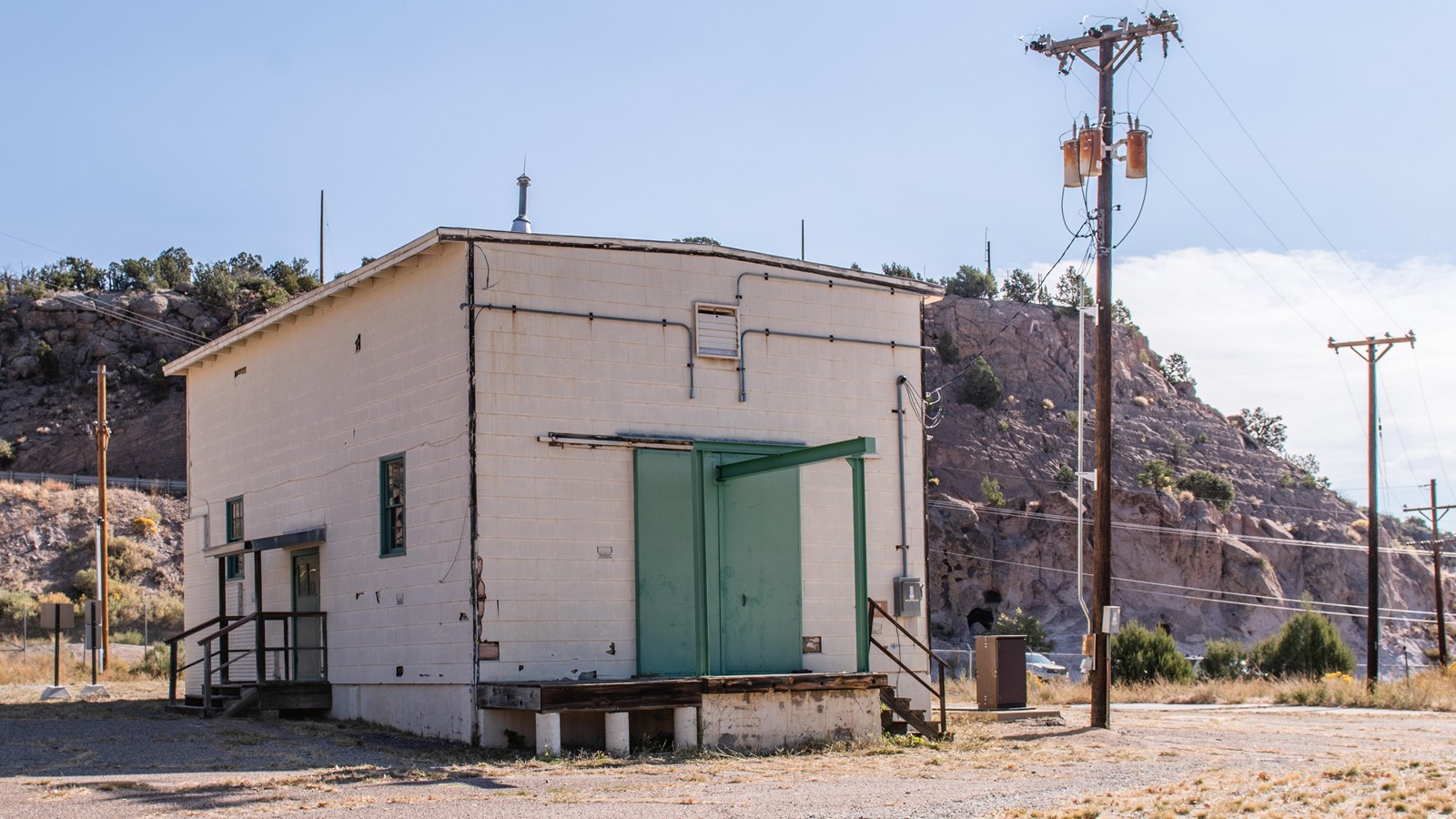Last updated: March 8, 2022
Place
Slotin Building

LOS ALAMOS NATIONAL LABORATORY
This site is on Los Alamos National Laboratory property. You can only access it through guided tours offered on specific dates. Find out more about tour reservations and schedules on the Bradbury Museum website.
Canadian-born physicist Louis Slotin earned the nickname "Chief Armorer of the United States" for his skillful assembly of the world's first atomic weapon. Few had more experience with the design and construction of nuclear weapons than Slotin. Nonetheless, when his hands slipped during an experiment in May of 1946, Slotin caused a criticality accident in this building that exposed him to lethal doses of radiation.
Slotin grew up in Winnipeg, Canada, where he earned his bachelor’s and master’s degrees at the University of Manitoba. He moved to London for his doctoral studies, earning a degree in physical chemistry from King’s College London in 1936, then to Chicago, where he helped build the first cyclotron in the Midwest at the University of Chicago. Slotin joined the Manhattan Project while working in Chicago, moving to the Oak Ridge National Laboratory and eventually Los Alamos to contribute his expertise to the project.
In Los Alamos, Slotin worked under Robert Bacher at the Weapon Physics Division. He conducted criticality tests, helping determine the critical mass values of uranium and plutonium samples. The experiments carried a high risk of danger, requiring scientists to bring the radioactive cores just to the brink of criticality. Because of his expertise, Slotin assembled the core of the Gadget, the world’s first atomic device detonated in the Trinity Test on July 16, 1945.
After the war, Slotin made plans to return to teaching. As “one of the few people left here who are experienced bomb putter-togetherers,” Slotin had to stay in Los Alamos to train his replacements. On May 21, 1946, he performed a criticality test involving two half-sphere shells of beryllium and a small plutonium core—the same one that had killed fellow Manhattan Project scientist Harry Daghlian less than a year before. While keeping the shells slightly separated with a screwdriver, Slotin’s hand slipped and the shells collided, immediately going critical. A wave of heat flooded the room, the air glowed blue with air ionization, and the burst of hard radiation had done its damage.
Slotin immediately experienced a sour taste in his mouth and felt a burning sensation in his hand. He vomited as soon as he left the building, and colleagues rushed him to the hospital. At the hospital, Slotin’s condition rapidly deteriorated. He experienced a series of radiation-induced traumas. Blisters, swollen hands, intestinal paralysis, and internal radiation burns eventually turned to mental confusion and a “total disintegration of bodily functions.” After slipping into a coma, Slotin died on May 30 at the age of 35, becoming the second casualty of the “demon core” of plutonium.
Continue Your Journey
On the US Department of Energy tour to Technical Area 18, you can see Cavates, dwellings carved into tuff cliffs by Ancestral Pueblo people. Additionally, you may peer into the Pond Cabin windows, where Emilio Segre conducted his plutonium research. You walk near Battleship Bunker - Creutz Test and Battleship Bunker - Magnetic Method sites where scientists conducted early implosion tests prior to the Trinity Test.
Can’t get on a Department of Energy tour? Learn more about the history of the Manhattan Project by visiting the Bradbury Science Museum! The museum’s interactive exhibits share stories from the project and provide a glimpse of other “behind the fence” historical sites.
